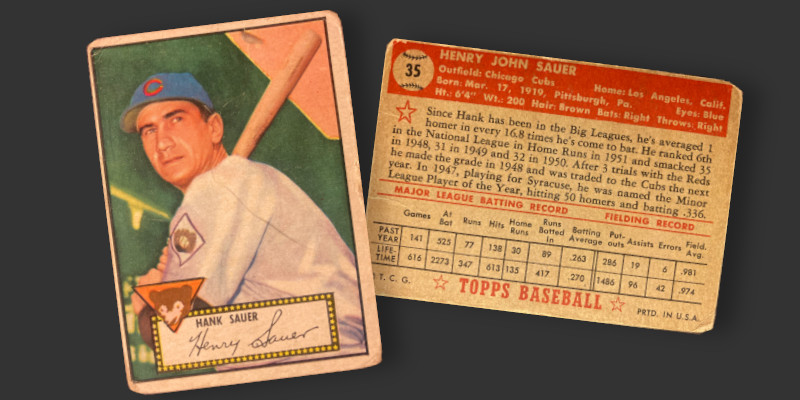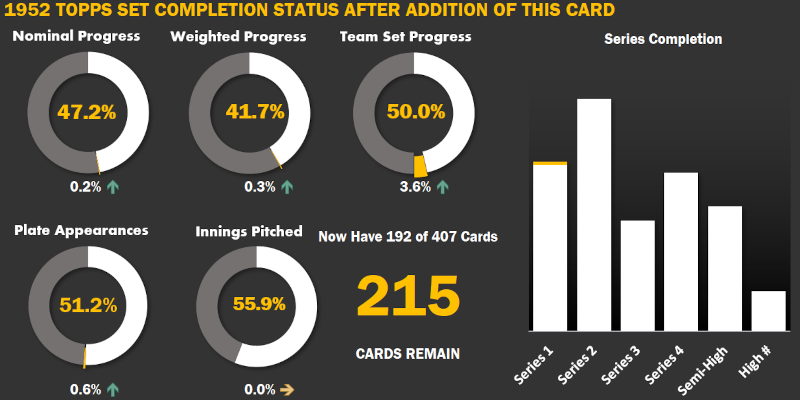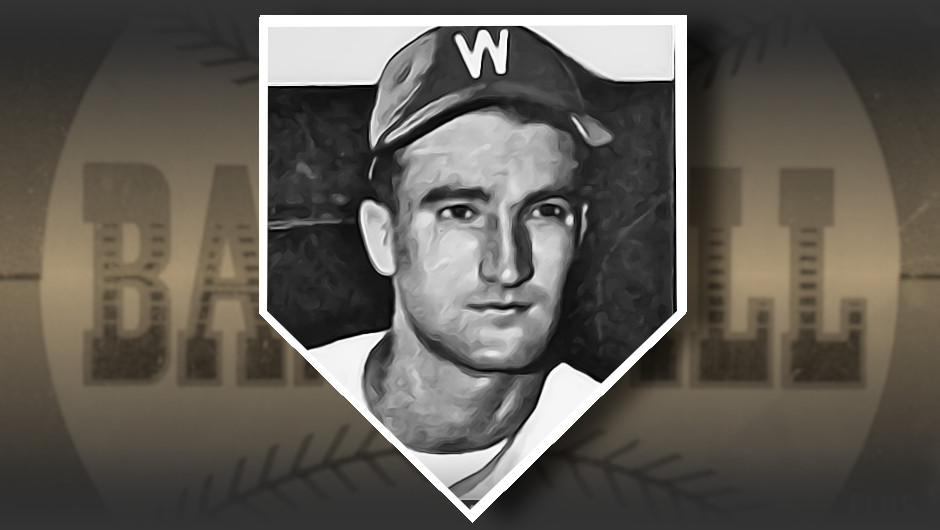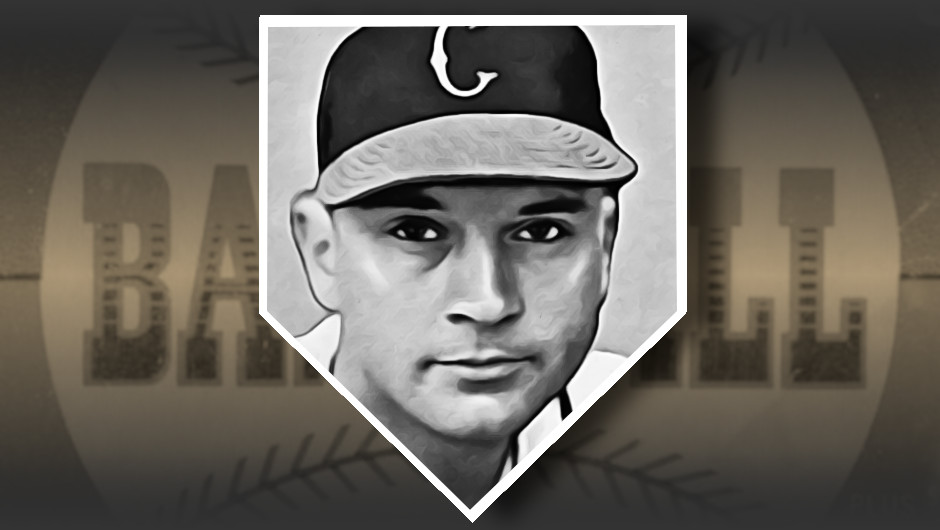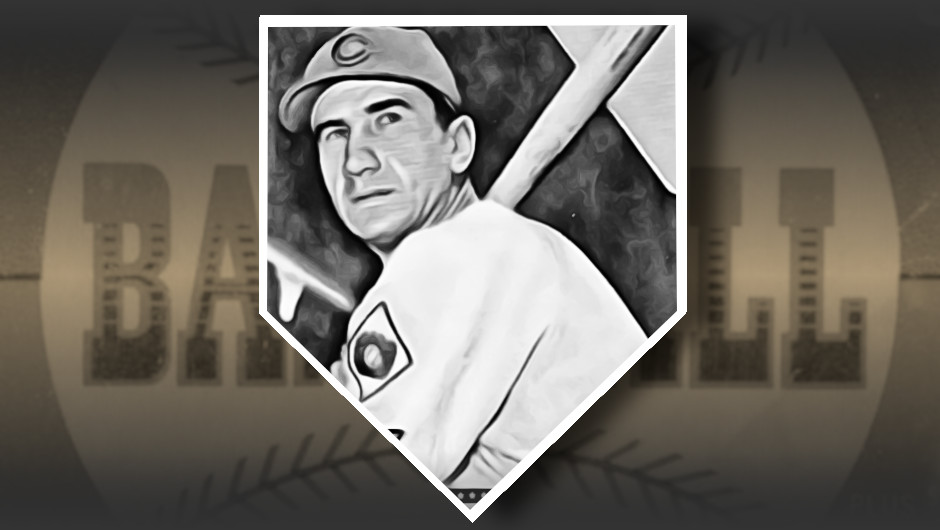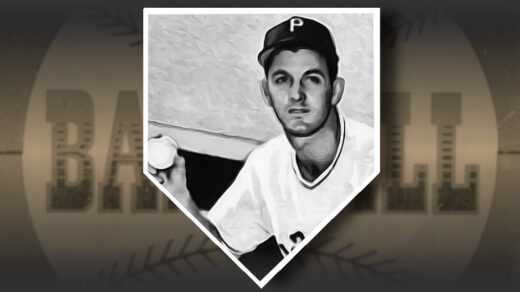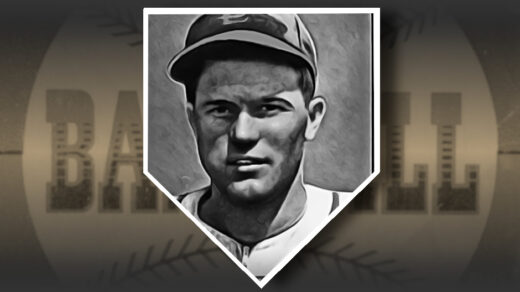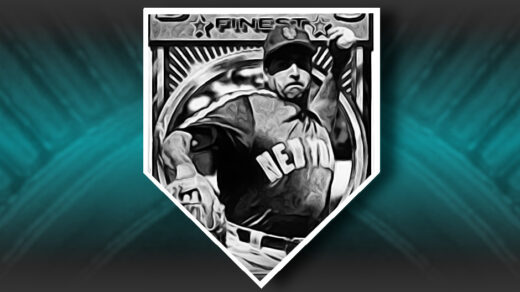The Chicago Cubs and Pittsburgh Pirates were very competitive in the early 1950s, both keeping fans in suspense as the teams battled it out for last place in the National League. Powering Pittsburgh’s effort was the slugging of Ralph Kiner, a home run hitting monster who knocked one over the fence every 14 at-bats. Chicago provided an almost blow-for-blow response in the form of Hank Sauer.
Like Kiner, Sauer clubbed home runs at a rate line with the likes of Eddie Mathews and Willie Mays. The two PIT/CHC rivals actually tied for the NL home run crown with 37 apiece in 1952. Both were notoriously slow baserunners, with Sauer gaining the ignomious distinction of having been caught stealing in a majority of his attempts at taking a base.
Following this 1/2 finish and Sauer’s capture of the MVP award, a 1953 mid-season trade paired them together on the Cubs. Sauer was the local favorite of the duo, maintaining his position as the “Mayor of Wrigley Field” and happily pocketing fans’ regular offerings of chewing tobacco tins between innings. The chaw was coming in such quantities that he served as a one-man distribution system for the team’s tobacco needs and would store the excess in the ivy covering Wrigley’s outfield wall.
Sauer’s baseball career didn’t reach escape velocity until he was already in his 30s. On and off again stints with the Cincinnati Reds bookended a multi-year deployment to the Pacific in WW2. He did not get to play full time until his age 31 season, and at that time still had less than 50 career MLB games under his belt. Sauer had hit 7 home runs prior to this point and would go on to smack 281 more. Kiner had 329 home runs on his resume by age 31 and only had 40 more left in the tank after that age.
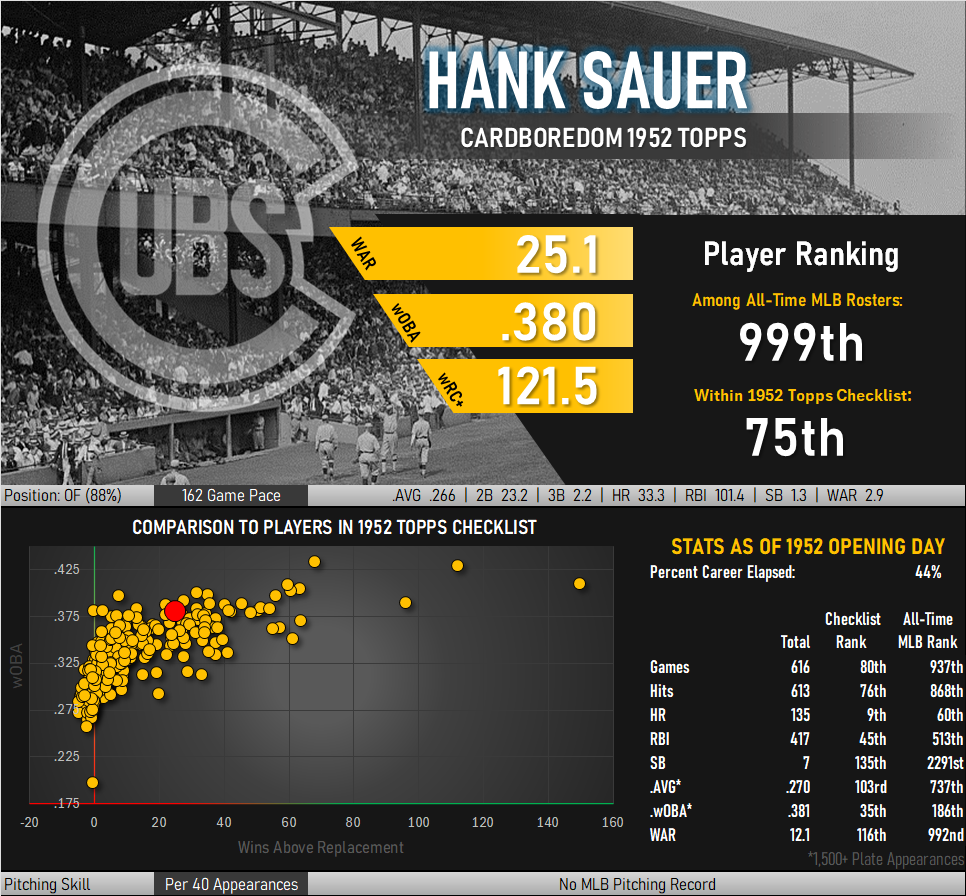
I looked at Sauer and Kiner because of similar power hitting numbers and the proximity of their careers crossing to the issuance of baseball cards I am targeting. For those looking for an even bigger name with a stat line matching Sauer, look no further than Roger Maris.
| Player | .AVG | HR | SB | PA |
|---|---|---|---|---|
| Sauer | .266 | 289 | 11 | 5,414 |
| Maris | .260 | 275 | 21 | 5,846 |
Sauer wasn’t a big name to me as a kid growing up in Virginia in the 1980s and ’90s. My first cardboard exposure to the player arrived in the form of a bunch of 1975 Topps cards that one of my older cousins had acquired from packs in the ’70s. I was fascinated by these two-tone cards and especially by the MVP subset situated in the middle of the checklist. On these 24 cards Topps reproduced* images of baseball cards from earlier sets portraying winners of each year’s MVP awards (*Some sets never included the eventual MVP winner so Topps made up fictitious “what-if” designs).
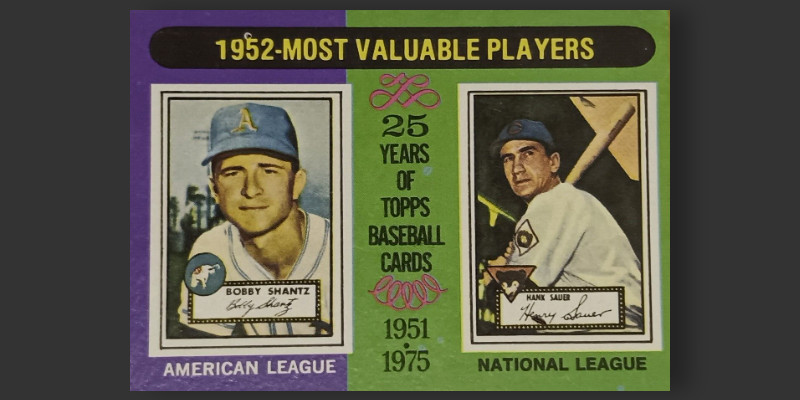
As winner of the 1952 NL MVP, Sauer was one of the first players to appear in Topps’ retrospective 25th anniversary subset. Aside from the ubiquitous pictures of Mickey Mantle in price guides, the Sauer card became the first 1952 card that I could identify on sight as an eight-year-old.
Even though I was a card-crazy collector and frequent connoisseur of low-grade bargain bins for much of the next decade, it wasn’t until the past year that I finally added this card to my collection. My copy is in suitably rough condition and it wasn’t until I sat down to edit photographs of the card for this post that I realized my copy has a large pencil line drawn across Sauer’s shoulder. My card is of the red-back variety found in Series One. Like many red backs, the card exhibits lighter coloring on the front than what appears on the black back versions. This difference can be seen in the 1975 MVP card above, where the stadium grandstands look almost black in the background.
